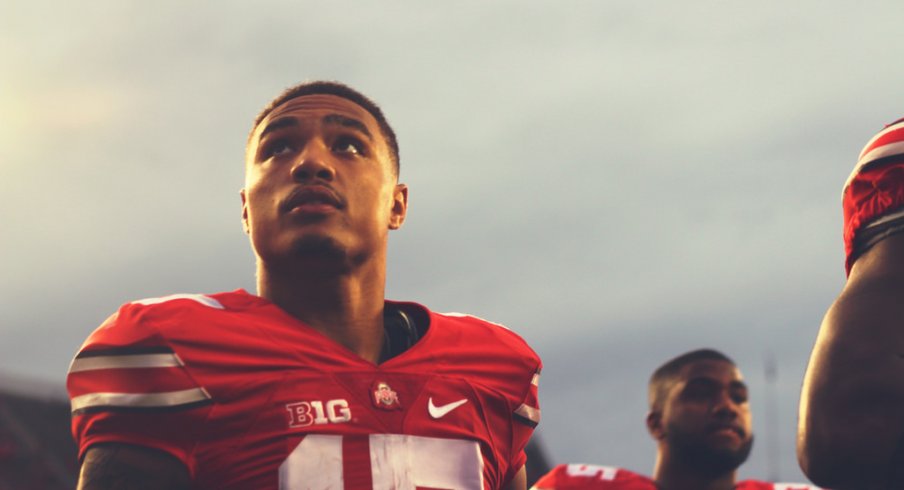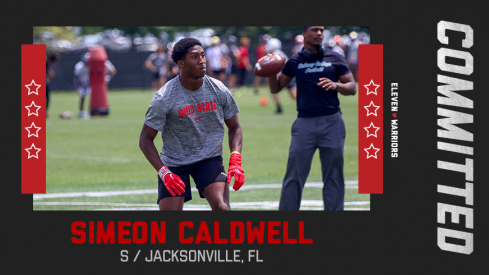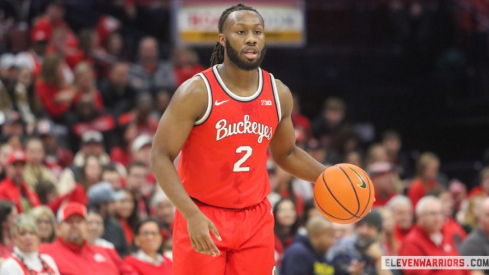Ohio State adds another top-100 safety as Simeon Caldwell commits to the Buckeyes.
Though quarterback Cardale Jones led the Buckeyes down the field for an easy score on their opening possession of Saturday's 38-12 victory over Western Michigan, the offense showed the same inconsistencies that plagued them a week earlier during the team's second drive. As the unit took the field for the third time early in the second quarter, the pressure was on Jones to deliver a drive that would settle an increasingly restless fanbase.
Though the Broncos would often line up defensively with two deep safeties, they had shown a good amount of Cover-1 to that point in the contest. This meant man-to-man coverage with only the free safety playing in a deep zone in the middle of the field.
After a direct snap to Braxton Miller resulted in no gain on first down, co-offensive coordinators Tim Beck and Ed Warinner would begin to directly test this solo coverage. With two receivers and a tight end to the left, the duo called for 'H' receiver Curtis Samuel to come in short motion toward the middle of the field (called 'In' motion in the Urban Meyer playbook) on second down.
The motion and alignment were called for very specific reasons. First, the motion forced the cornerback to follow Samuel, tipping the defense's hand and confirming for Jones that the defense had called for man coverage. Second, Miller was lined up in the backfield as the running back with two receivers and a tight end to the left, meaning the defender responsible for him in coverage be a linebacker, a matchup in which the speedy former quarterback should almost always win.
At the snap, Samuel released straight upfield while outside receivers Jalin Marshall and Michael Thomas ran a 'mesh' concept, meaning two matching, shallow crossing routes. To make things more difficult for the defense, tight end Nick Vannett stayed in to block, letting Miller sneak out uncovered as the linebackers fail to pick him up.
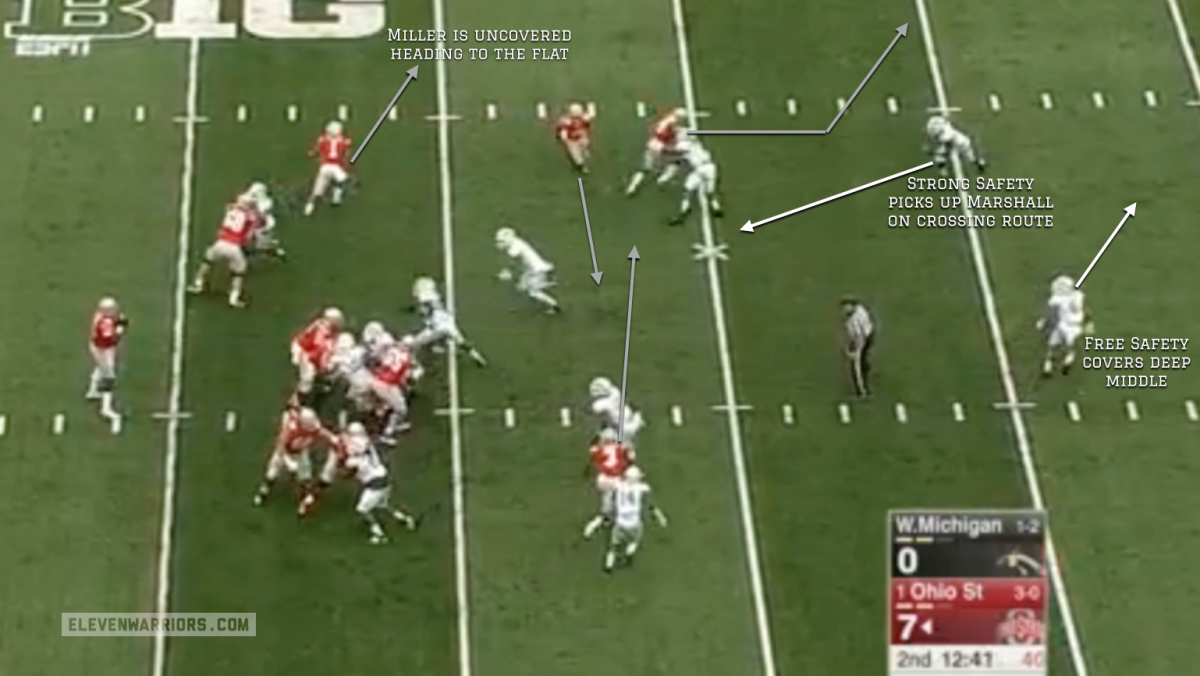
The result is a wide open Miller in the flat, who makes an easy catch before picking up 16 yards.

Though the play-call seemed to be designed to get Miller the ball in space, it gave the OSU coaching staff a clear insight into the way the Broncos would defend that particular formation. But instead of waiting to take advantage later in the game, the Buckeyes would go right back to this look just a few plays later.
After a short completion to Michael Thomas and pair of runs from Ezekiel Elliott, OSU faced first-and-ten inside Western Michigan territory. With the ball once again placed on the right hash, the Buckeyes would emerge in the same formation and short motion that sprung Miller.
Once again, the motion would force the defense to reveal their solo coverage before the snap, and even though Elliott would run a flat route from the backfield as Miller had, this play was called to attack downfield. Samuel's initial alignment to the outside meant the WMU cornerback would follow him wherever he went, meaning the strong safety would pick up Marshall, the other receiver to that side.
That particular matchup of a speedy wide receiver on a strong safety in solo coverage heavily favored the Buckeyes, and followed the same philosophy that broke Devin Smith free for a number of deep touchdowns from the slot last fall.
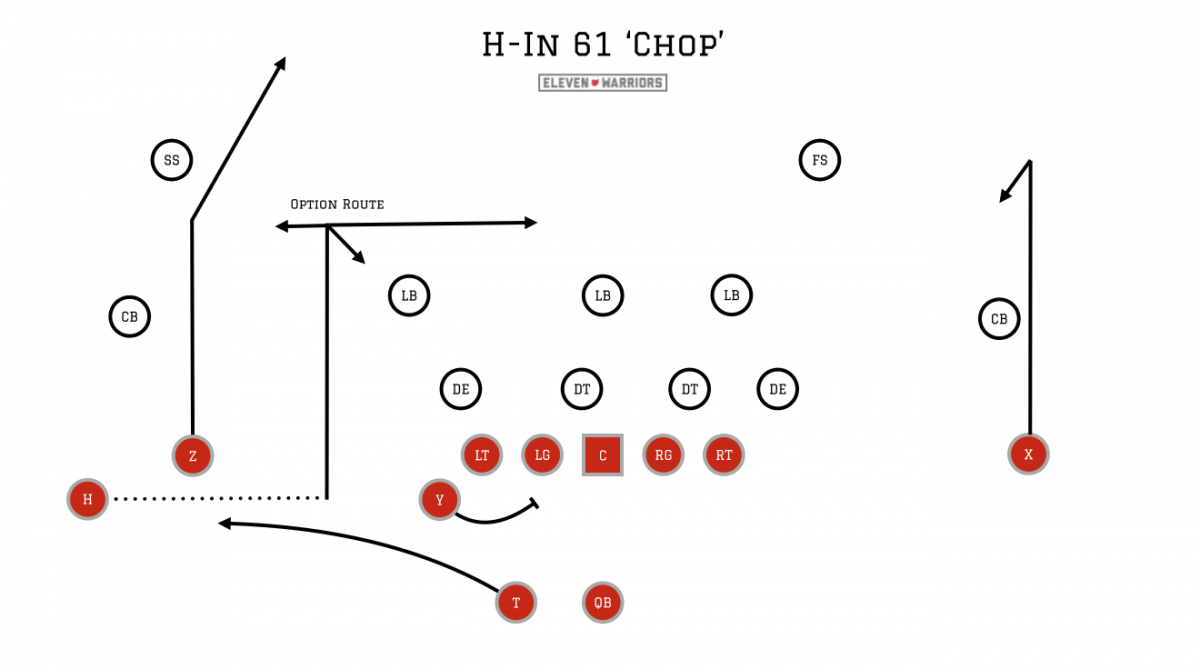
As Samuel becomes the inside receiver to the left after going in motion, he breaks toward the middle on a ten-yard crossing route, bringing the corner with him while sucking up the free safety that has responsibility for the deep middle. Meanwhile, Marshall takes off downfield on a skinny post. Both players could expect their defenders to shade them on the outside, knowing they should have help in the middle from the free safety, meaning routes to the inside should be open.
While the corner does a good job of staying tight on Samuel, the safety assigned to Marshall maintains a huge cushion while staying just to his outside.
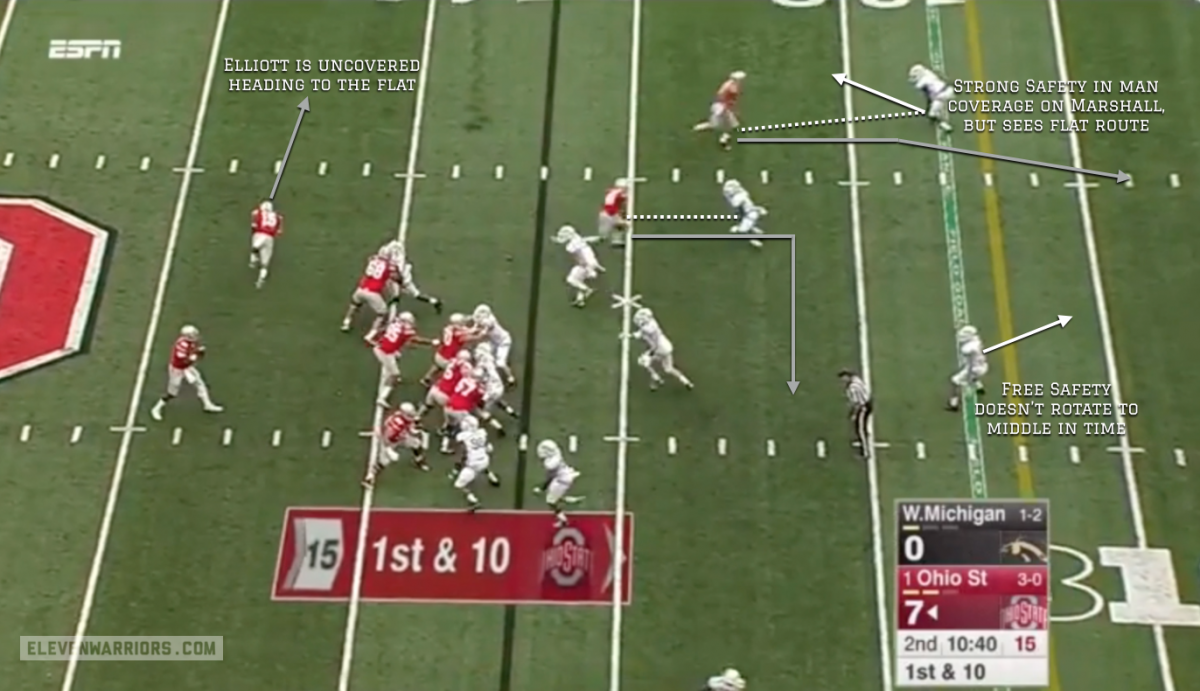
But even though Marshall is coming straight upfield, Elliott's route out of the backfield looked so much like Miller's before that the safety opens his hips to the outside, perhaps expecting a corner route. Jones is able to make an easy read on the safety, and after Marshall blows by he's able to step up in a clean pocket and deliver an easy throw (at least for him).

For a unit whose leadership had been questioned for seven straight days, the Buckeyes did an excellent job of complementing looks on top of one another. While observing what a defense is doing is one thing, having built-in concepts that look the same and can take advantage of perceived weaknesses speaks directly to the work done during the week.
The Buckeyes would spring receivers open downfield repeatedly on the day, and although Jones hit on three deep balls that afternoon, he could've easily completed more if not for multiple throws behind his receivers. That problem is fixable with practice reps, and according to Meyer, will be addressed immediately.
Before the game, the OSU offense was questioned both for its play-calling and personnel decisions. But after a day in which the former made the latter look much better, it's easy to see why expectations are so high for the group.
